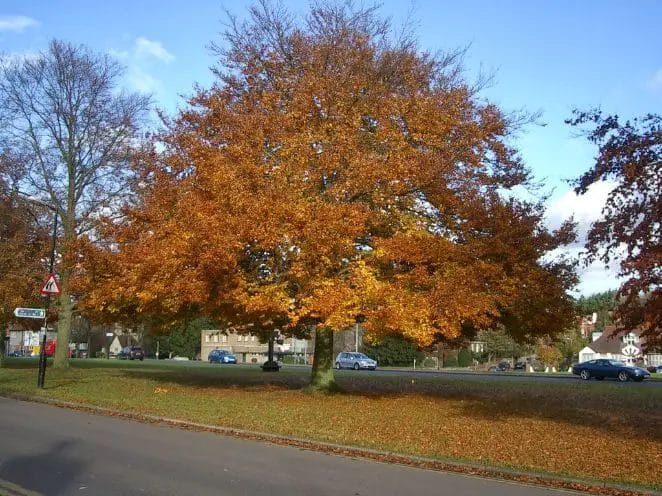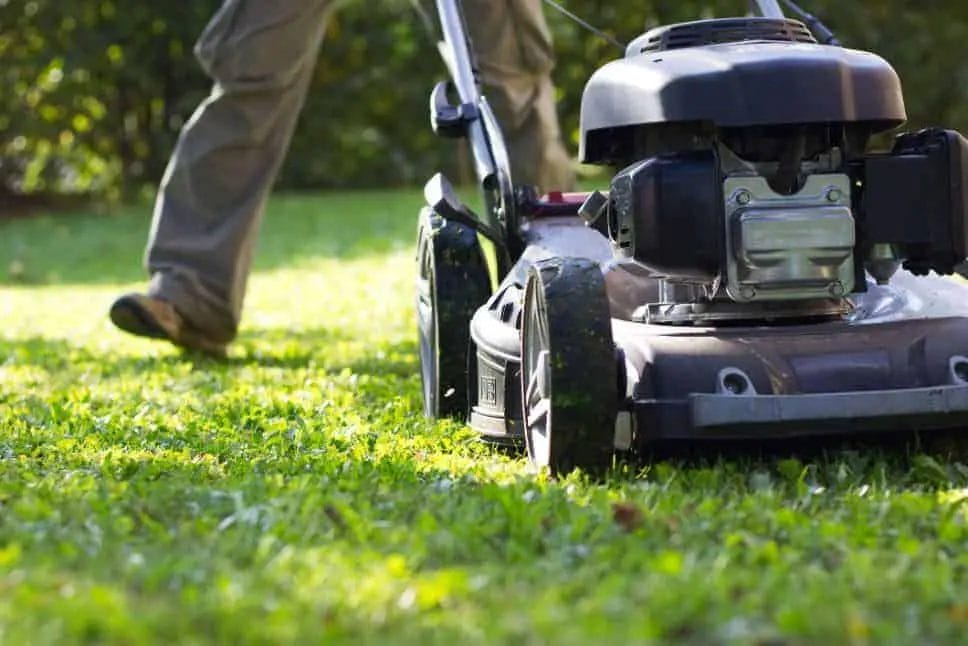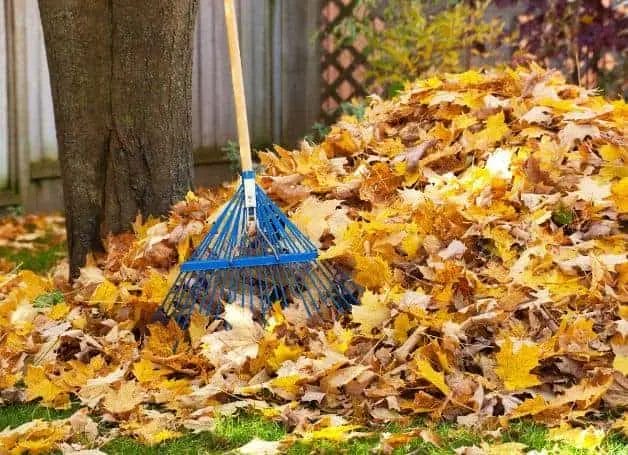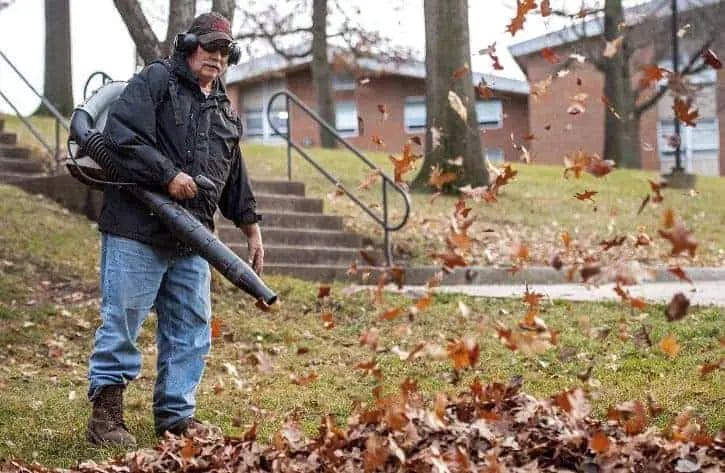If you’ve got trees in your garden, or if you have neighbours who have trees that hang over into your garden, you might find leaf litter to be an issue that’s both aesthetically unappealing and effort to clean up. Could using your lawn mower to pick these leaves up be the answer?
Whether the leaves are yours or yours or from your neighbours’ trees is irrelevant; they’re in your garden so they’re your problem. You’re the one who has to see them every day fluttering about your lawn in the breeze and collecting on your patio furniture. It’s no wonder you’re looking for a solution!

When autumn rolls around and falling leaves seem like an endless onslaught, the issue magnifies and can become a bit overwhelming to deal with, especially if there are a lot of trees around your garden. You want a solution that’s going to be efficient and sustainable – no one wants to be running outside every day picking up leaves manually.
In this article, we’ve outlined how your lawn mower could be the answer to your prayers, because yes, it will pick up leaves as you mow. We’ve also included a few alternative methods. Hopefully you’ll find something that could help you with your leaf litter problem, so you can say goodbye not only to the leaves, but to the stress that they come with too!
This is probably the most popular method of using your lawn mower to get rid of leaves on your grass as it comes with several benefits. With a few adjustments, you can turn your lawn mower from merely a grass cutting machine to a grass cutting and leaf mulching one!
With a standard petrol or electric rotary mower, you just need to insert the mulch plug and close the discharge port so that all clippings are directed back onto the lawn instead of shooting out the side of the mower or being collected in the compost bag attachment.

With these slight modifications, your mower will be able to redirect not only grass clippings, but also chopped up leaf bits onto your lawn as a fine mulch. Setting your mower to its highest setting will also help to pick up any leaves on the grass more effectively so you don’t leave any behind.
Picking up leaves from your grass only to redeposit them onto your lawn in a slightly different form might seem counterintuitive when we’re trying to get rid of them, but mulching your lawn with leaf matter is a great way to add nutrients to the soil and aid healthy grass growth.
The chopped-up bits of leaf and grass clippings have been superficially broken down by your lawn mower blades and the smaller pieces will then be broken down completely over time by microorganisms in the soil. Once your lawn has the chance to absorb the newly released nutrients, it will flourish!
If you find there are too many leaves on your grass, then the above method for dealing with them might not be the most appropriate. After all, your lawn will only need a very thin mulch layer which won’t require too many leaves.
If your garden situation is more of a blanket of leaves rather than a scattering of leaves, then composting is your best option! This method is equally simple, and all you need to do is attach the compost bag rather than the mulch plug.
The compost bag is the attachment that would normally catch and store all the grass clippings, but if you’re mowing over a substantial number of leaves, then these leaves will get caught and stored too as you go over them. Again, it’s best to keep your mower on a high setting to get the most leaf-gathering power.

Once your bag attachment is full, you can transfer the leaves and grass clippings to a compost bin or special composting bag and wait for it to decompose down. Once it’s turned into compost, you can then use it to add nutrients to your garden beds and any potted plants you might have.
Both mulching and composting leaves provide sustainable solutions to getting rid of leaf litter. Instead of incinerating and essentially wasting all that natural material, you’re putting it back into the soil which enriches it and improves plant growth and health.
You’ve most probably used this method at some point in your life and if you have, you’ll know how much effort it is and how frustrating it can be. Maybe you were given some pocket money as a child to rake leaves into piles, or maybe you give your own children some money to do this chore.

Although the right type of rake can be quite effective at gathering large volumes of leaves relatively quickly, rakes are not very good at picking up any stragglers that might be left on your grass after the bulk have been removed. Raking is also not very practical if you have a very large garden as it’s quite physically intense and would be much slower than using your mower.
If you do rake leaves though, once they’re in a pile they’re fairly easy to stuff into bags or scoop onto a compost pile, although still not as easy as simply emptying a mower bag attachment.
Depending on the size of your garden, number of leaves on the grass, and amount of time and energy you have to spare, you might consider a combination of methods in one. Using these three different tools can be a really effective way to make sure no leaves are left on your lawn at the end of the day.
Start by using a leaf blower to gather all the leaves into one area or pile. This will help to make them easier to deal with and get rid of than trying to pick up leaves from all different parts of the garden.

Then use a rake (or your hands) to scoop leaves into a compost pile or bin, or into leaf composting or disposal bags. When there are only a few leaves left on the grass that are getting more difficult to pick up with the rake, it’s time to get the lawn mower out.
Mow over the leaves with the highest setting activated and the mower should pick up the remainders, either mulching them or depositing them in the compost attachment – depending on which route you’ve decided on.
You should be left with a lead-free lawn at the end of this process!
What option of the four listed above you go for will depend on a number of factors:
If your garden is only small and there aren’t too many leaves, then a quick sweep with a rake might be all you need. For larger gardens with more dense leaf blankets, a leaf blower or lawn mower will provide a more efficient solution.
Likewise, not everyone just has a leaf blower sitting around in their shed, so it goes without saying that you should choose an option that suits your means. There’s no sense going out a buying expensive garden equipment that you might not need.
As we’ve seen above already, composting and mulching are two of the most sustainable and eco-friendly options, with the added benefit that both of these methods will add nutrients back to your soil, improving the health and growth of your grass and plants.
But if you don’t have the space for a compost bin or your lawn doesn’t require mulching, then what else is there to do with your leaves?

One simple option is to bag up your leaves with your other garden and organic waste and organise a garden waste collection from your council. This is a good option if you’re looking to dispose of large volumes of organic matter, so ideal after a day of pruning, strimming, or other landscaping tasks.
If you have a firepit or space for a bonfire, you could consider burning your leaves and other organic material, but make sure you’re allowed to do this in your area and that any smoke caused won’t be affecting neighbours.
If you have a friend or neighbour who has an allotment, you might be able to organise a collection with them if they’d like to add your leaves to their compost or mulch, and social media platforms are also a good way to find people that might want to take your leaves off your hands.
Lawn mowers are a great help in picking up fallen leaves on your grass, and there are several ways in which your lawn mower can help to utilise them. If using a lawn mower isn’t for you, then fear not as there are always other manual options.
Whatever you decide, make sure you’re using your equipment correctly and safely, and that whatever disposal method you choose is not going to negatively impact people around you or cause damage to the environment.